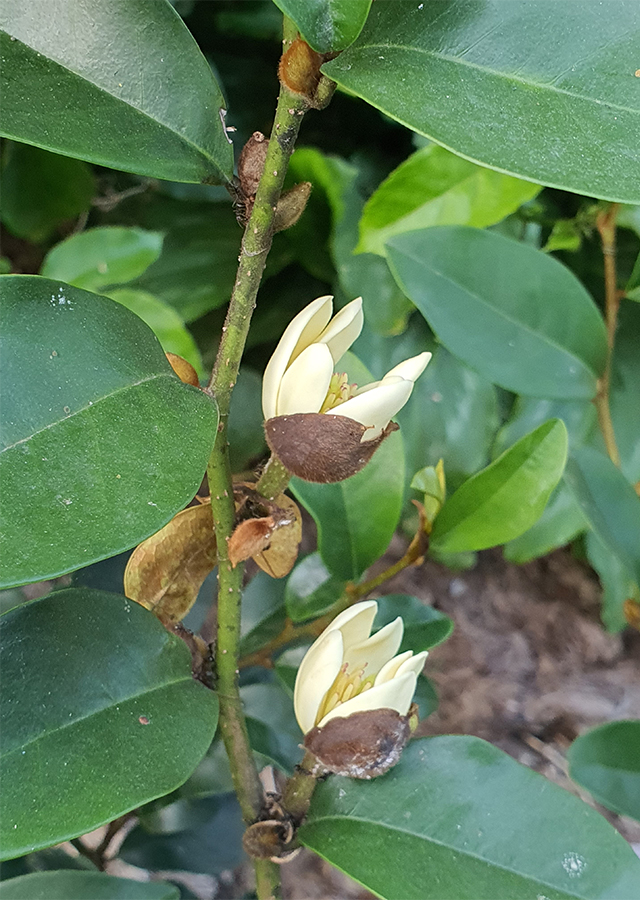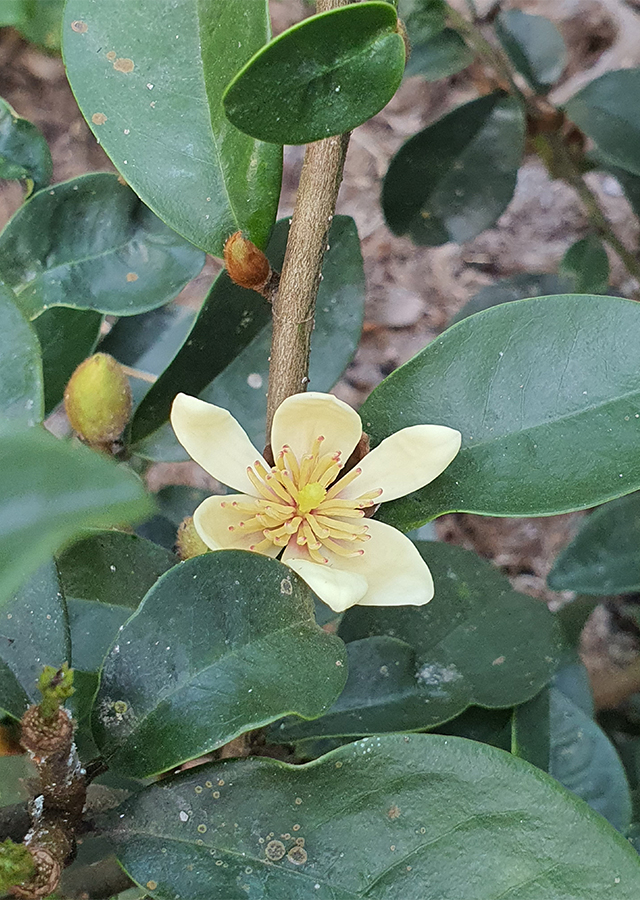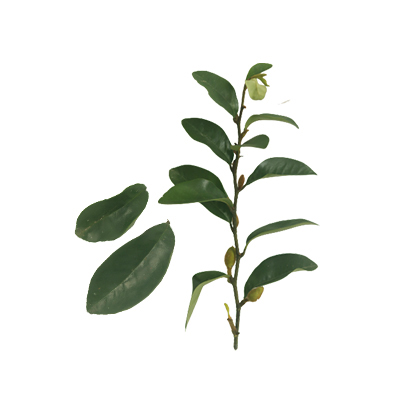Banana Shrub
Magnolia figo (Lour.) DC.
Magnoliaceae
Location in our garden
Principal



Synonym
Liriodendron figo Lour.
Michelia figo (Lour.) Spreng.
Habitus
Shrubs. Perennial shrub growing around 5 metres tall
Part Used
Leaves
Flowers
Growing Requirements
Full Sunshine
Habitat
Riverbanks
Forest
Terrestrial
Overview
M. figo originates from South-Eastern China; in South-East Asia it is frequently and widely cultivated mainly as ornamental shrub, but it is not known to be naturalized. M. figo are commonly cultivated for their fragrant flowers and as ornamentals. The flowers of M. figo are also used in hair lotions. In China scented yulan tea is prepared with the flowers of M. × alba and M. figo.
Vernacular Names
Chenille copperleaf (English), Foula figo (France), Cempaka ambon, Cempaka telor (general), Cempaka gondok (Javanese) (Indonesia) Chempaka ambon, Pisang-pisang (Malaysia), Champi khaek (central), Champa khaek (south-eastern) (Thailand), Tu-tieu (Vietnam).
Agroecology
M figo is found scattered in primary lowland to montane rain forest, up to 2100 m altitude. Mean maximum temperature of the hottest month ranges from 35-40 °C, the mean minimum temperature of the coldest month from 3-10 °C. Succeeds in a humus-rich well-drained neutral to alkaline soil in direct light or partial shade. Requires a neutral to acid soil.
Morphology
- Branches twigs often zigzag, with brown hairs.
- Leaves usually distichously arranged, glabrous; stipules adnate to the petiole for nearly their whole length, with long brown hairs; petiole 3-5 mm long with long stipular scars; blade elliptical to oblong, 3-6.5(-11) cm × 2-5 cm, base attenuate, apex with short acumen of 0-5 mm, veins in 9-12 pairs, reticulation fine and prominent. Brachyblast 0.5-20 cm long, woolly pubescent; pedicel very short; bracts spathaceous, pubescent, covering the broadly ellipsoid to globose flower buds.
- Flowers dirty white, fragrant; tepals 6, about 2 cm long, with purple spot at base; stamens about 1 cm long, filaments purple, connective appendage very short; carpels 20-30, glabrous, on gynophore 2 mm long, ovules usually 2, stigma purple.
- Fruiting carpels (follicles) 1-several, subglobose, 8 mm in diameter, often containing only 1 seed.
Cultivation
Seed - probably best sown in a lightly shaded position in a nursery seedbed as soon as it is ripe. When they are large enough to handle, prick the seedlings out into individual pots and plant them out into their permanent positions when large enough.
Cuttings of greenwood.
Chemical Constituents
Flowers: five alkaloids, (asimilobine, -romerine, -anonaine, thalifoline, and corydaldine): two steroids, (-sitosterol and stigmasterol); four benzeneoids, (p-hydroxybenzaldehyde, p-hydroxybenzoic acid, methylparaben, and vanillin); two coumarins (scopoletin and aesculetin dimethyl ether) and one sesquiterpene, caryophyllene oxide. Leaves: three alkaloids, (nuciferine, -anonaine, and N-methylcorydaldine), two steroids (sitostenone and stigmasta-4,22-dien-3-one), four benzeneoids (p-hydroxybenzaldehyde, p-hydroxybenzoic acid, methylparaben, and vanillin), six chlorophylls (pheophytin a, pheophorbide a, pheophytin b, pheophorbide b, aristophyll-C, 132-hydroxy-(132-S)pheophytin a), and one sesquiterpene lactone, 11,13-dehydrolanuginolide. Flower heads: butyl acetate, ethyl hexanoate, ethyl butyrate, 2-methylbutyl acetate, ethyl isobutyrate and ethyl 2-methylbutyrate.
Traditional Medicinal Uses
Flower bud: irregular menstrual periods, qi-stagnating abdominalgia, rhinitis. Leaves: injuries from falls. Buds: oral administration: decocting, 10-15g. Leaves: external application: fresh products appropriate amount, smashed for applying on affected parts.
Part Used
Reference Sources
- PROSEA. 2021. Michelia (PROSEA Essential oils). https://uses.plantnet-project.org/en/Michelia_(PROSEA_Essential_oils). 18-10-2021.
- Ken Fern. Useful Tropical Plants. 2021. Magnolia figo. http://tropical.theferns.info/viewtropical.php?id=Magnolia+figo. 18-10-2021.
- National Park. Flora Fauna Web. 2021. Magnolia figo (Lour.) DC. https://www.nparks.gov.sg/florafaunaweb/flora/2/2/2224. 18-10-2021.


